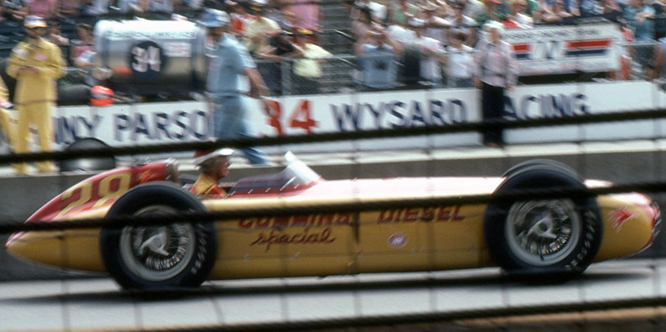The saying in the li’l ol’ England was that everything in the USA and indeed North America was bigger than anything ever seen in Europe and to a greater or lesser extent that was verified on my first trip to North America in 1988, the buildings the cars and even the average height and build of the people seemed to dwarf anything I was exposed to on a regular basis in London or anywhere else in Europe.

What I was not expecting on my 24 hour trip from Toronto to Indianapolis for the Indy 500 was the overwhelming number of race fans camped out in every suburban nook and cranny surrounding Indianapolis Motor Speedway. In Europe most race tracks don’t attract even half of the 250,000 fans IMS can hold and even then the fans are usually spread out over several miles of country side and so never approach the kind of concentration seen at Indy.
I had expected a pretty wild, read friendly if a little drunk, crowd and was not disappointed, though I am glad I did not take my girl friend with me, I think she may have felt just a little intimidated by the rowdy vibe. Soon after getting into the IMS infield just after dawn on race day I found an apparent ocean of Indiana State Police pre’88 face lift Ford LTD Crown Victoria’s and was so impressed with the scale of the law enforcement presence I took the photo above.
The pre ’88 face lift Ford LTD Crown Victoria, also known as the Crown Vic was launched in 1983, from what I have been able to discern police package Crown Vic’s were available either 160 hp 5 litre / 302 cui EFI V8’s or 180 hp 5.7 litre / 351 cui HO V8’s driving through four speed AOD (Automatic Overdrive) transmissions around 1987, never enough to beat the Chevrolet Caprice in the Michigan State Police tests run at Michigan International Speedway, but close enough to keep the order books open until the introduction of the Ford Crown Victoria Police Interceptor in 1992.
These cars were particularly popular with law enforcement agencies because they were rear wheel drive, RWD, having a perceived more predictable handling and because they featured a separate chassis onto which the body was attached offering the advantage of lower repair costs because the chassis was less likely to get damaged in inevitable collisions which law enforcement work would expose these vehicles to.
Thanks for joining me on this “A Field Full Of Crown Vics” edition of “Gettin’ a li’l psycho on tyres” I hope you will join me again tomorrow for Ferrari Friday. Don’t forget to come back now !


